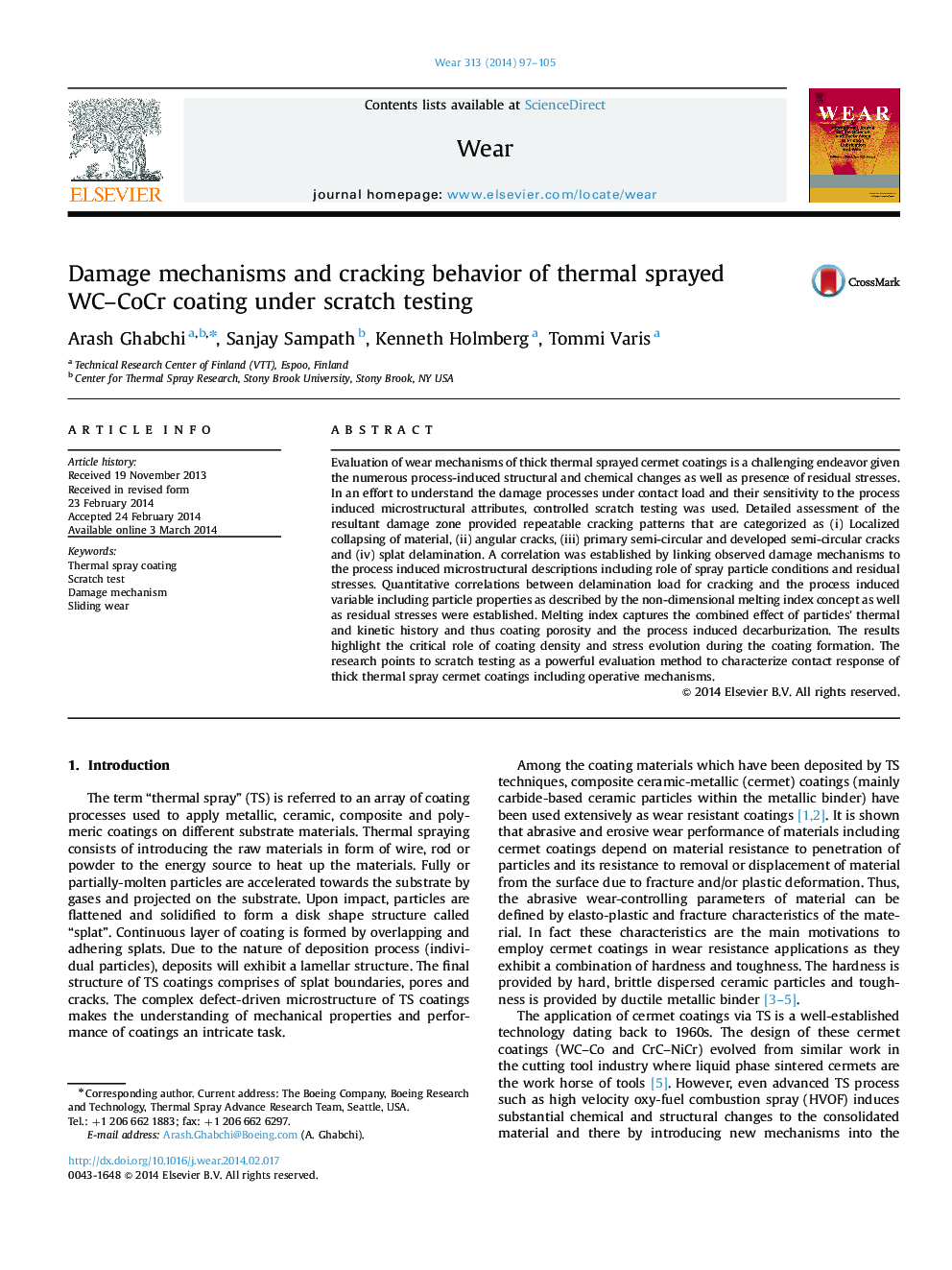| Article ID | Journal | Published Year | Pages | File Type |
|---|---|---|---|---|
| 617370 | Wear | 2014 | 9 Pages |
Abstract
Evaluation of wear mechanisms of thick thermal sprayed cermet coatings is a challenging endeavor given the numerous process-induced structural and chemical changes as well as presence of residual stresses. In an effort to understand the damage processes under contact load and their sensitivity to the process induced microstructural attributes, controlled scratch testing was used. Detailed assessment of the resultant damage zone provided repeatable cracking patterns that are categorized as (i) Localized collapsing of material, (ii) angular cracks, (iii) primary semi-circular and developed semi-circular cracks and (iv) splat delamination. A correlation was established by linking observed damage mechanisms to the process induced microstructural descriptions including role of spray particle conditions and residual stresses. Quantitative correlations between delamination load for cracking and the process induced variable including particle properties as described by the non-dimensional melting index concept as well as residual stresses were established. Melting index captures the combined effect of particles׳ thermal and kinetic history and thus coating porosity and the process induced decarburization. The results highlight the critical role of coating density and stress evolution during the coating formation. The research points to scratch testing as a powerful evaluation method to characterize contact response of thick thermal spray cermet coatings including operative mechanisms.
Related Topics
Physical Sciences and Engineering
Chemical Engineering
Colloid and Surface Chemistry
Authors
Arash Ghabchi, Sanjay Sampath, Kenneth Holmberg, Tommi Varis,
